I. Build & Enhance Your Online Presence
Websites
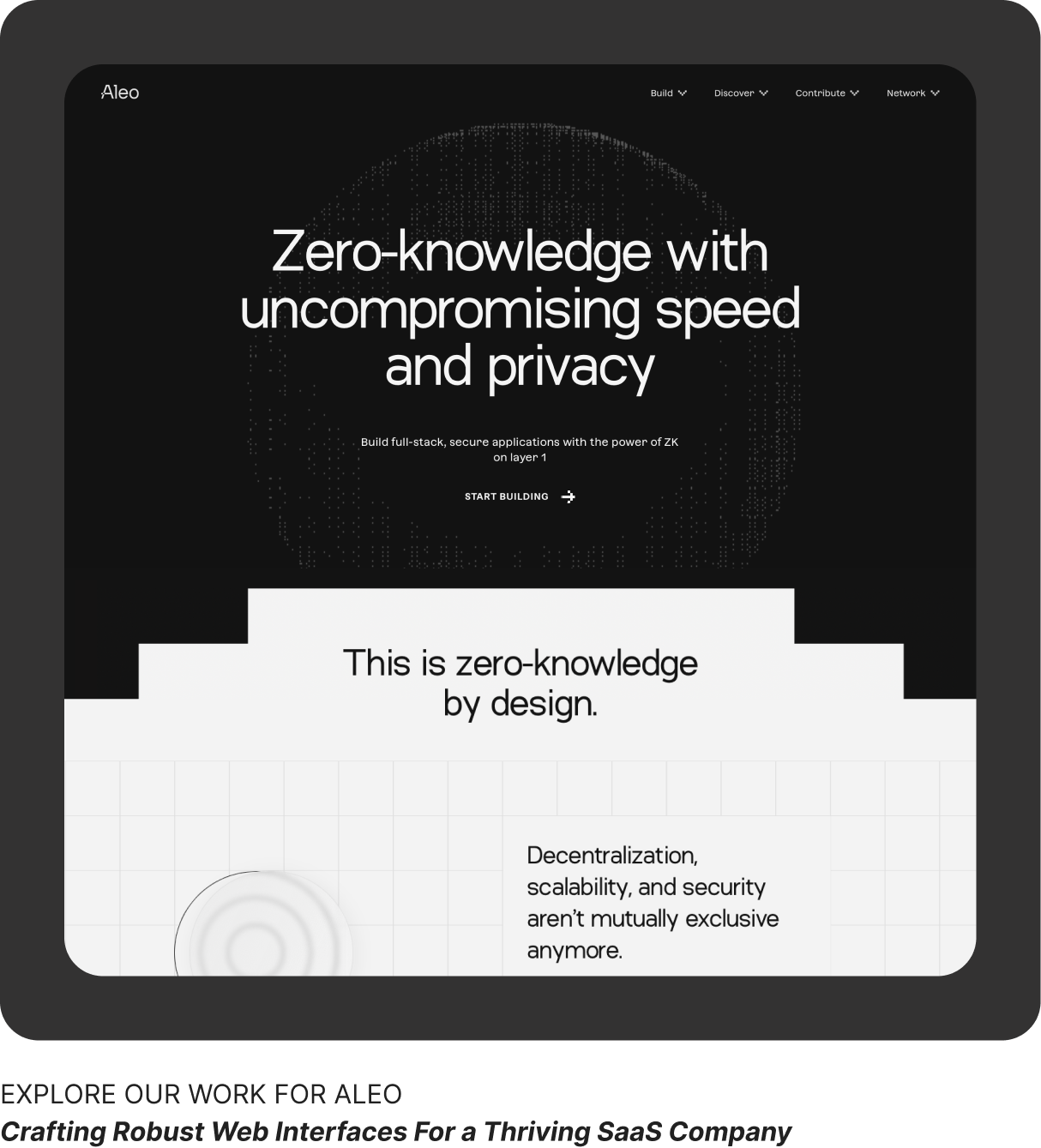
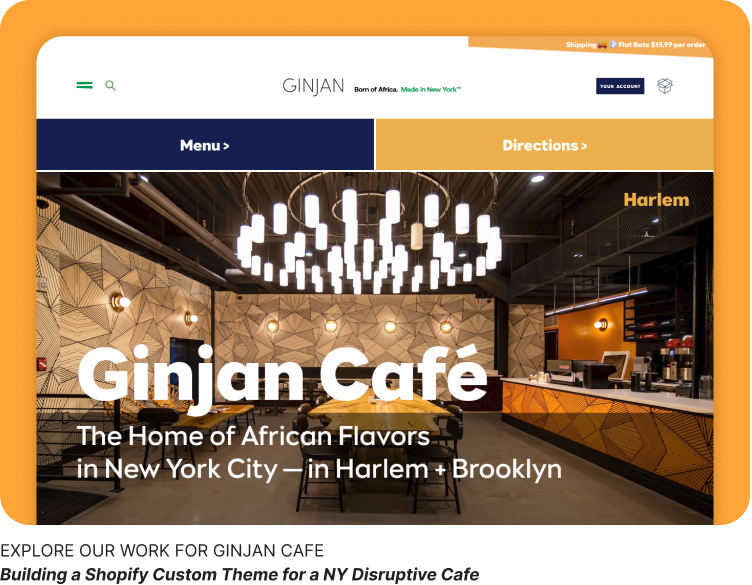
Beyond just a digital brochure, corporate and informational websites serve as the central hub for businesses and organizations to communicate their brand story, showcase their offerings, and engage with their target audience. These websites are designed to be informative, user-friendly, and visually appealing, leaving a lasting impression on visitors.
Services Involved in Creating Them:
-
Web Design & Development: This encompasses the entire process of creating the website's structure, layout, and functionality. It includes:
- UX/UI Design: Crafting intuitive navigation, user-friendly interfaces, and visually appealing layouts.
- Front-End Development: Coding the website's visual elements and interactive features using HTML, CSS,and JavaScript.
- Back-End Development: Building the server-side logic and database interactions that power the website's functionality.
- Content Management System (CMS) Integration: Implementing and customizing a CMS like Webflow,HubSpot, or Prismic to enable easy content updates.
-
Content Creation & Strategy: Developing high-quality, informative, and engaging content that aligns with the website's purpose and target audience. This includes:
- Copywriting: Crafting clear and compelling website copy, headlines, and calls to action.
- Content Strategy: Planning and organizing content to ensure it's relevant, valuable, and optimized for search engines.
-
Search Engine Optimization (SEO): Optimizing the website's structure and content to improve its visibility in search engine results, driving organic traffic.
Industries That Benefit from These Websites:
- Virtually any industry can benefit from a well-crafted corporate or informational website. Some common examples include:
- Technology & SaaS
- Healthcare & Pharmaceuticals
- Financial Services
- Manufacturing & Industrial
- Professional Services (Law, Consulting, etc.)
- Education & Non-profits
- Real Estate & Construction
- Hospitality & Tourism
In essence, any organization that wants to establish a strong online presence, communicate its brand message effectively,and engage with its target audience can benefit from a professionally designed and developed corporate or informational website.
Landing pages are the sharp point of your marketing spear, designed to capture attention, deliver a compelling message, and drive conversions. Unlike traditional web pages with multiple navigation options, landing pages eliminate distractions and focus visitors on a specific action, such as signing up for a newsletter, downloading an e-book, or making a purchase.
Creating high-converting landing pages requires a blend of creative and technical expertise. Here are the key talents involved:
Web Designers: Crafting visually appealing and user-friendly layouts that guide visitors towards the desired action.
Copywriting: Develop persuasive and concise messaging that clearly communicates the value proposition and encourages conversions.
UX/UI Designers: Optimize the user experience, ensuring seamless navigation and intuitive interactions.
Front-End Developers: Bring the design to life with clean and efficient code, ensuring optimal performance and responsiveness across devices.
Let's explore the unique aspects of "A la Apple" landing pages and their relevance across industries.
Services Involved (Beyond Standard Landing Page Creation):
- Interactive Design & Development: Creating engaging on-scroll experiences, animations, and micro-interactions that captivate users and guide them through the page's narrative.
- Storytelling & Content Strategy: Crafting a compelling brand story that resonates with the target audience and evokes an emotional connection.
- High-Fidelity Visual Design: Producing visually stunning graphics, animations, and imagery that align with the brand's aesthetic and create a premium feel.
- User Experience (UX) Optimization: Meticulously refining the user journey to ensure seamless navigation,intuitive interactions, and a delightful browsing experience.
The Point of Creating "A la Apple" Landing Pages:
- Create a Memorable Brand Experience: These pages go beyond simple information delivery; they immerse visitors in a brand's world, leaving a lasting impression.
- Showcase Product or Service Innovation: Highlight the unique features and benefits of a product or service through interactive demonstrations and captivating visuals.
- Drive Emotional Engagement: Storytelling and interactive elements evoke emotions, fostering a deeper connection with the brand and increasing the likelihood of conversions.
- Differentiate from Competitors: Stand out in a crowded market with a visually striking and engaging landing page that captures attention and inspires action.
Industries Where They Make Sense:
- Technology & Consumer Electronics: Showcase product innovation and create a sense of excitement around new launches.
- Luxury Brands & Fashion: Emphasize brand storytelling, craftsmanship, and exclusivity through high-quality visuals and immersive experiences.
- Creative Agencies & Design Studios: Demonstrate creative capabilities and showcase a portfolio of work in an interactive and engaging format.
- Startups & Innovative Companies: Capture attention and generate buzz around a new product or service launch.
- Any industry seeking to create a premium brand experience and differentiate itself through storytelling and innovation.
In essence, "A la Apple" landing pages are ideal for brands that want to make a bold statement, tell a captivating story,and create a lasting impression on their audience. They're particularly effective for showcasing innovative products or services and building emotional connections with potential customers.
A break down of the CRO process into a few key steps will involve:
-
Analyze: Gather data on how users interact with your website or landing page. This includes tracking metrics like bounce rates, click-through rates, and conversion rates. Tools like Google Analytics and heatmaps can provide valuable insights.
-
Identify: Pinpoint areas of friction or drop-off in the user journey. Where are people leaving your site? What's preventing them from taking the desired action?
-
Hypothesize: Develop data-backed hypotheses about why users aren't converting. These could involve issues with design, messaging, calls to action, or the overall user experience.
-
Test: Implement changes based on your hypotheses and conduct A/B testing to compare the performance of different variations. This could involve testing different headlines, button colors, page layouts, or even entirely new design concepts.
-
Iterate: Analyze the results of your tests and make data-driven decisions about which changes to keep and which to discard. Continuously refine your website or landing page based on user behavior and feedback.
When it comes to CMS integration, choosing the right platform is critical. Each has its strengths and aligns with different client needs and scenarios.
Webflow: This platform shines for its visual design capabilities and ease of use. It's a great fit for businesses that prioritize design flexibility and want to empower their marketing teams to make updates without extensive coding knowledge. However, its capabilities can be limited for complex enterprise-level projects that require extensive customization or integration with other systems.
HubSpot CMS: This option is ideal for businesses already invested in the HubSpot ecosystem or those seeking a powerful all-in-one marketing and CRM solution. It offers a user-friendly interface, robust features, and seamless integration with other HubSpot tools. While it can handle enterprise-level projects, its strength lies in its marketing automation and personalization capabilities.
Headless CMS (Prismic, Sanity, Strapi): These platforms offer unparalleled flexibility and customization for complex,enterprise-level projects. They decouple the content management backend from the presentation layer, giving developers complete control over the front-end experience and allowing for integration with any technology stack. However, they require a higher level of technical expertise and may not be the most intuitive option for non-technical users.
In summary:
- Webflow: Best for design-focused businesses seeking a user-friendly platform with visual editing capabilities.
- HubSpot CMS: Ideal for businesses using HubSpot's marketing and CRM tools or those prioritizing personalization and automation.
- Headless CMS: Perfect for large enterprises or projects requiring maximum flexibility, customization, and integration with diverse technologies.
Ultimately, the best choice depends on each client's specific needs, technical capabilities, and long-term goals. Quo Agency's expertise in all three options allows us to recommend and implement the ideal solution for every project.
Shopify Development
-
What it is: Shopify is a leading cloud-based eCommerce platform that empowers businesses to create and manage their online stores with ease. It offers a user-friendly interface, a vast app store for added functionality, and a wide range of customizable themes.
-
Talent & Expertise: Shopify development involves leveraging the platform's features and APIs to build and customize online stores. This includes:
- Theme Development & Customization: Creating visually appealing and functional storefronts using Shopify's templating language (Liquid) and CSS.
- App Integration: Extending the platform's capabilities by integrating various apps from the Shopify App Store.
- Custom Functionality Development: Building bespoke features and functionalities to meet unique business requirements.
- Payment & Shipping Integration: Setting up secure payment gateways and configuring shipping options.
- Ongoing Maintenance & Support: Providing technical assistance and updates to ensure the store runs smoothly.
-
Theme Development vs. Headless:
- Theme Development: Involves working within the confines of Shopify's theme structure, customizing pre-built templates or creating new ones from scratch. This approach is generally faster and more cost-effective for businesses with standard eCommerce needs.
- Headless Commerce: Decouples the front-end presentation layer from the back-end eCommerce functionality, allowing for greater flexibility and customization. This approach is ideal for businesses with complex requirements or those seeking a highly unique and personalized storefront experience.
BigCommerce Development
-
What it is: BigCommerce is another popular cloud-based eCommerce platform known for its robust features,scalability, and enterprise-level capabilities. It offers a wide range of built-in features, extensive API support, and the ability to handle large product catalogs and high traffic volumes.
-
Talent & Expertise: BigCommerce development involves leveraging the platform's features and APIs to build and customize online stores. This includes:
- Theme Development & Customization: Creating visually appealing and functional storefronts using BigCommerce's Stencil theme framework and Handlebars templating language.
- App Integration: Extending the platform's capabilities by integrating various apps from the BigCommerce App Marketplace.
- Custom Functionality Development: Building bespoke features and functionalities to meet unique business requirements.
- Payment & Shipping Integration: Setting up secure payment gateways and configuring shipping options.
- Ongoing Maintenance & Support: Providing technical assistance and updates to ensure the store runs smoothly.
-
Theme Development vs. Headless:
- Theme Development: Involves working within the confines of BigCommerce's theme structure, customizing pre-built templates or creating new ones from scratch. This approach is suitable for businesses seeking a balance of functionality and customization.
- Headless Commerce: Similar to Shopify, headless commerce on BigCommerce allows for greater flexibility and customization by separating the front-end and back-end. This approach is ideal for businesses with complex requirements or those seeking a highly unique and personalized storefront experience.
Choosing the Right Platform:
The choice between Shopify and BigCommerce, as well as the decision to go headless, depends on various factors,including:
- Business Size & Complexity: Shopify is often favored by small to medium-sized businesses, while BigCommerce is popular among larger enterprises with more complex needs.
- Customization Requirements: Headless commerce offers the most flexibility for customization, but it also requires more technical expertise and development time.
- Budget: Shopify tends to be more budget-friendly for smaller businesses, while BigCommerce may have higher upfront costs but offers more scalability for growing businesses.
- Specific Features & Integrations: Consider the specific features and integrations required for your business and choose the platform that best supports them.
Web Applications & Technical Solutions
While the "Websites" category focuses on the core structure and design of websites, "Web Applications & Technical Solutions" delves deeper into the specialized functionalities and integrations that enhance those websites.
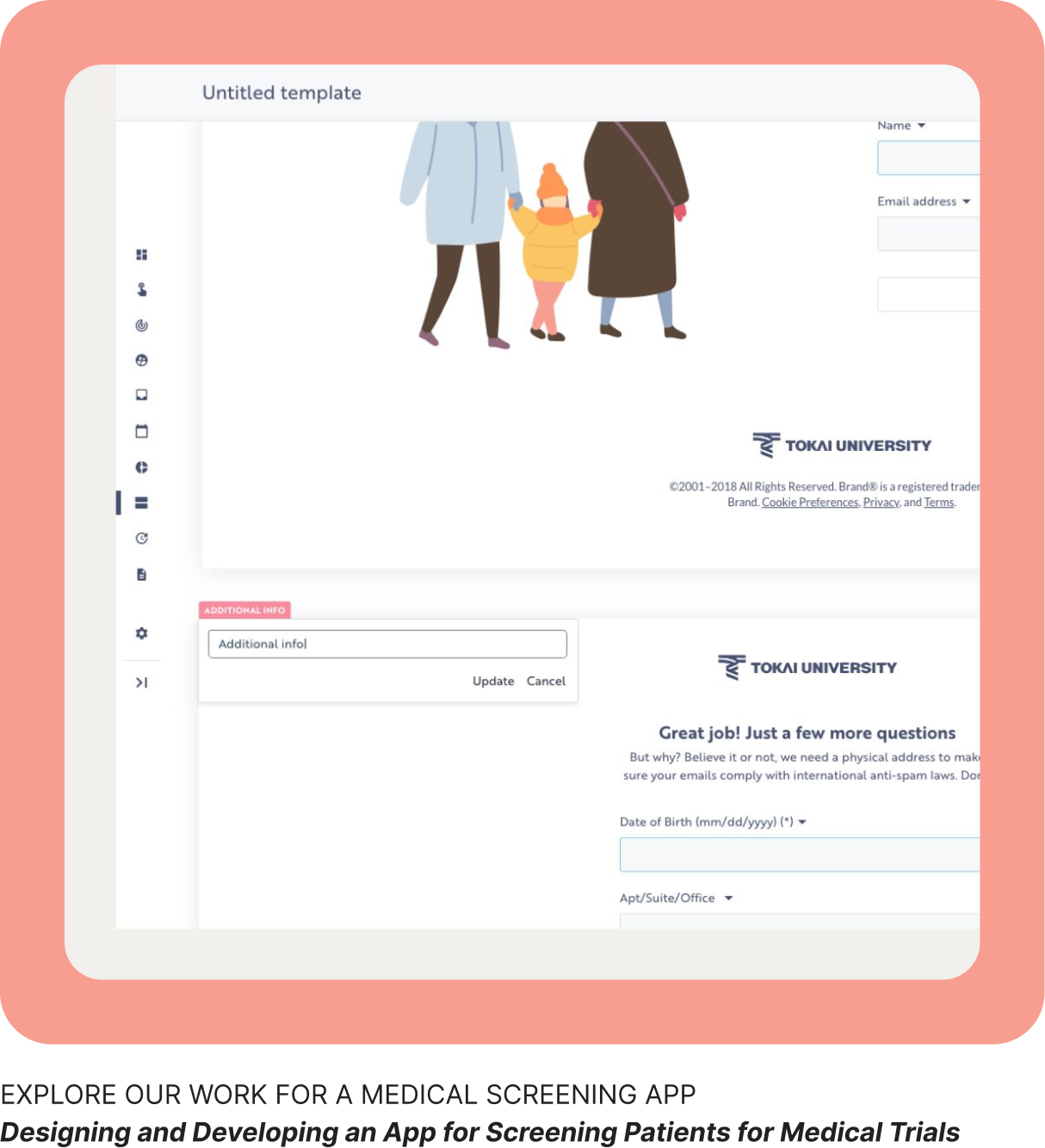
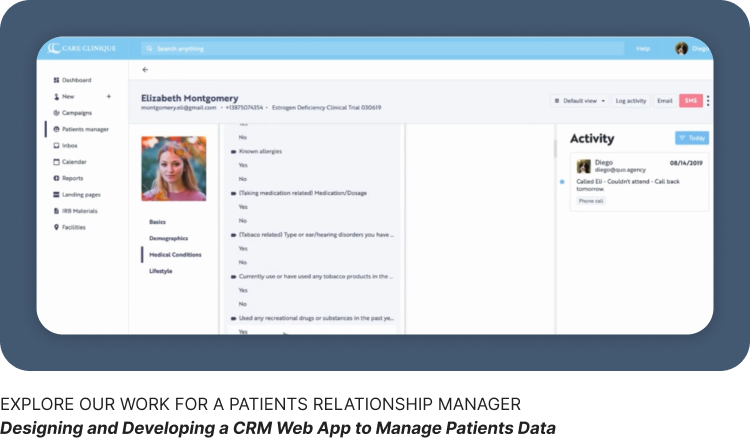
The development of custom web applications typically involves a multi-stage process that ensures the final product aligns with the client's needs and expectations. While the specifics can vary depending on the project's complexity and scope,here's a common process Quo Agency could follow:
-
Discovery & Requirements Gathering: This initial phase involves in-depth discussions with the client to understand their business objectives, target audience, desired features, and technical constraints. This information is crucial for defining the project scope and creating a detailed project plan.
-
Design & Prototyping: Once the requirements are clear, the design team creates wireframes and prototypes to visualize the application's structure, layout, and user flow. This allows for early feedback and ensures everyone is aligned on the overall vision.
-
Development: The development team then brings the design to life, coding the front-end and back-end functionalities of the application. This involves choosing the appropriate technologies, frameworks, and programming languages to ensure optimal performance and scalability.
-
Testing & Quality Assurance: Rigorous testing is conducted throughout the development process to identify and fix any bugs or issues. This ensures the application functions as intended and provides a seamless user experience.
-
Deployment & Launch: Once the application has been thoroughly tested, it's deployed to a production environment and made available to users.
-
Maintenance & Support: Ongoing maintenance and support are provided to address any issues that may arise,implement updates, and ensure the application continues to meet the client's evolving needs.
Throughout the process, Quo Agency maintains open communication with the client, providing regular updates and seeking feedback to ensure the project stays on track and aligns with their vision.
API integrations play a crucial role in streamlining marketing efforts and enhancing data-driven decision-making for companies. Here are some common scenarios where API integrations prove invaluable:
Inventory Management: Integrating with inventory management systems allows for real-time synchronization of stock levels across various sales channels, preventing overselling and ensuring accurate product availability information for customers.
Order Management & Fulfillment: Integrating with order management and fulfillment systems streamlines the process of receiving, processing, and shipping orders, improving efficiency and reducing errors.
Shipping & Logistics: Integrating with shipping carriers and logistics providers enables automated shipping label generation, real-time tracking updates, and efficient delivery management.
Payment Gateways: Integrating with multiple payment gateways offers customers a variety of payment options,increasing convenience and improving conversion rates.
Customer Relationship Management (CRM): Integrating with CRM systems allows for centralized customer data management, enabling personalized marketing campaigns, targeted promotions, and improved customer service.
Marketing Automation: Integrating with marketing automation platforms enables automated email campaigns,abandoned cart recovery, and personalized product recommendations, driving customer engagement and boosting sales.
Analytics & Reporting: Integrating with analytics tools provides valuable insights into sales data, customer behavior,and marketing campaign performance, enabling data-driven decision-making and optimization.
Social Media & Marketplaces: Integrating with social media platforms and online marketplaces expands product reach and enables seamless selling across multiple channels.
PayPal and Stripe are two of the most popular and widely used payment gateways. Aside from these, there are also:
Square: A great choice for businesses with a physical presence, as it offers seamless integration with their point-of-sale systems.
Authorize.Net: A well-established and reliable payment gateway, often favored by larger enterprises.
Braintree: A PayPal-owned gateway known for its developer-friendly APIs and global reach.
Adyen: A comprehensive payments platform that supports various payment methods and currencies, ideal for businesses with international customers.
Beyond driver's license and credit score verification, here are some other common scenarios where fraud prevention and financial integrations are sought after, particularly within the context of Quo Agency's services and its target market of busy marketing teams:
-
Enhanced Identity Verification:
- Multi-Factor Authentication (MFA): Adding layers of security beyond passwords, such as one-time codes sent to mobile devices or biometric authentication.
- Knowledge-Based Authentication (KBA): Asking users questions based on their personal information to verify their identity.
- Document Verification: Verifying the authenticity of uploaded documents like passports or utility bills using AI and machine learning.
-
Risk Assessment & Scoring:
- Transaction Monitoring: Analyzing transaction patterns and user behavior to identify suspicious activity in real-time.
- Device Fingerprinting: Identifying and tracking devices used to access a website or application, helping to detect fraudulent behavior.
- Velocity Checks: Monitoring the frequency and volume of transactions to identify unusual patterns that may indicate fraud.
-
Chargeback & Dispute Management:
- Automated Dispute Resolution: Integrating with chargeback management systems to streamline the process of responding to and resolving disputes.
- Chargeback Prevention Tools: Implementing tools to identify and address potential chargeback triggers,such as incorrect billing information or product descriptions.
-
Compliance & Regulatory Requirements:
- Anti-Money Laundering (AML) Checks: Screening customers and transactions against AML watchlists and databases.
- Know Your Customer (KYC) Verification: Collecting and verifying customer information to comply with KYC regulations.
- GDPR & Data Privacy Compliance: Ensuring that data collection and processing practices adhere to relevant privacy regulations.
-
Additional Use Cases:
- Account Takeover Protection: Implementing measures to prevent unauthorized access to user accounts.
- Payment Fraud Detection: Identifying and preventing fraudulent transactions using machine learning algorithms and risk scoring.
- Subscription Management & Billing: Integrating with billing systems to automate recurring payments and manage subscription plans.
These integrations can be particularly valuable for eCommerce businesses, SaaS platforms, and any organization that handles sensitive customer data or financial transactions. By implementing robust fraud prevention and financial integrations, businesses can protect themselves and their customers from fraudulent activity, build trust, and ensure a secure and seamless online experience.
The process of Salesforce API integration can vary depending on several factors, including the specific integration requirements, the complexity of the data being exchanged, and the existing technology stack of the client's website or application. However, here's a general overview of the process:
-
Requirements Gathering and Planning:
- Clearly define the integration goals and objectives. What data needs to be exchanged between Salesforce and the website/application? What specific Salesforce objects and fields are involved? What are the desired workflows and automations?
- Identify the appropriate Salesforce APIs to use. Salesforce offers a variety of APIs, including REST API,SOAP API, Bulk API, and Streaming API, each with its own strengths and use cases.
- Choose the integration method. This could involve direct API calls, using a middleware platform, or leveraging pre-built connectors or plugins.
- Develop a detailed integration plan, outlining the data mapping, authentication mechanisms, error handling,and testing procedures.
-
Development and Configuration:
- Set up the necessary authentication and authorization mechanisms to securely access the Salesforce API.
- Write the code to interact with the Salesforce API, using the chosen programming language and integration method.
- Map the data between Salesforce and the website/application, ensuring data consistency and accuracy.
- Configure any necessary workflows or automations within Salesforce to trigger actions based on data exchanged with the website/application.
-
Testing and Quality Assurance:
- Thoroughly test the integration to ensure data is flowing correctly and all functionalities are working as expected.
- Test various scenarios, including error handling and edge cases, to ensure the integration is robust and reliable.
- Conduct user acceptance testing (UAT) to validate the integration from the end-user perspective.
-
Deployment and Monitoring:
- Deploy the integration to a production environment.
- Monitor the integration closely to identify any issues or performance bottlenecks.
- Implement logging and error tracking mechanisms to proactively address any problems.
Factors influencing the integration process:
- CMS: The choice of CMS can impact the integration process, as some CMS platforms may have built-in connectors or plugins for Salesforce, while others may require custom development.
- Integration Type: The specific type of integration, such as lead syncing, contact updates, or e-commerce data synchronization, will influence the complexity and scope of the project.
- Data Volume & Complexity: The volume and complexity of the data being exchanged can impact the integration's performance and require additional considerations for data mapping and transformation.
- Customization Requirements: If the integration requires custom workflows or automations within Salesforce, the process may involve additional configuration and development.
Overall, Salesforce API integration is a powerful way to streamline marketing and sales processes, improve data accuracy,and enhance customer experiences. By understanding the key steps and factors involved, Quo Agency can effectively implement these integrations and deliver value to clients seeking to leverage the full potential of Salesforce.
By incorporating features like conditional logic, dynamic fields, and progress indicators, these forms can effectively guide users through the onboarding process while collecting valuable data for lead nurturing and segmentation.
-
Support: Providing ongoing technical assistance to address any issues or bugs that may arise after the web application's launch. This could involve troubleshooting errors, answering user questions, and providing guidance on how to use the application effectively.
-
QA (Quality Assurance): Conducting thorough testing of the web application throughout the development process and post-launch to identify and rectify any defects or performance issues. This ensures the application functions as intended, delivers a seamless user experience, and meets the client's quality standards.
In addition to these core services, other areas within the "Web Applications & Technical Solutions" category can also contribute to maintaining a web app's functionality:
-
API Integrations: Ensuring that integrations with external services and platforms remain functional and up-to-date.
-
Payment Gateways Integrations: Monitoring and maintaining payment gateway integrations to ensure secure and seamless transactions.
-
Fraud Prevention & Financial Integrations: Regularly updating and monitoring fraud prevention and financial integrations to address evolving security threats and compliance requirements.
Search Engine Optimization (SEO)

On-Page Optimization is primarily concerned with optimizing the content and structure of individual web pages to make them more search engine-friendly.
How it helps with SEO:
- Relevance: Search engines want to show users the most relevant results for their queries. On-page optimization ensures your content aligns with search intent by using relevant keywords and providing valuable information.
- User Experience: Search engines also prioritize websites that offer a good user experience. On-page optimization improves factors like page load speed, mobile-friendliness, and clear navigation, making it easier for users to find what they're looking for.
- Crawlability & Indexability: Search engines need to be able to crawl and index your website's content to understand what it's about. On-page optimization ensures your site's structure and code are clean and easy for search engine bots to navigate.
On-Page Optimization, on the other hand, focuses on optimizing individual web pages for search engines. This includes:
-
Keyword Placement: Strategically incorporating target keywords into page titles, headings, meta descriptions, and image alt tags.
-
Content Structure & Formatting: Organizing content with clear headings, subheadings, and bullet points to improve readability and search engine understanding.
-
Internal Linking: Strategically linking between relevant pages within your website to improve user navigation and distribute link equity.
-
Meta Tags Optimization: Crafting compelling meta titles and descriptions that accurately summarize your content and entice users to click.
Technical SEO Audits and Fixes focuses on the technical aspects of your website that can impact its search engine visibility. This includes:
-
Website Speed Optimization: Improving page load times to enhance user experience and search rankings.
-
Mobile-Friendliness: Ensuring your website is optimized for viewing and navigation on mobile devices.
-
Crawlability & Indexability: Addressing issues that prevent search engine bots from accessing and indexing your website's content.
-
Site Architecture: Optimizing your website's structure and internal linking for better navigation and search engine understanding.
-
Structured Data Implementation: Adding structured data markup to your website's code to help search engines better understand your content and display it in rich results.
-
XML Sitemap Creation & Submission: Creating and submitting an XML sitemap to search engines to help them discover and index your pages.
-
Security & HTTPS: Ensuring your website is secure and uses HTTPS encryption to protect user data and improve search rankings.
Content Optimization Strategies delve deeper into the strategic planning and execution of content creation to achieve specific marketing and SEO goals. It involves:
-
Keyword Research & Strategy: Identifying high-value keywords and search terms that align with your target audience and business objectives.
-
Content Planning & Creation: Developing a content calendar and creating high-quality, informative, and engaging content that resonates with your audience and satisfies search intent.
-
Content Augmentation: Repurposing and enhancing existing content, such as podcasts and long-form conversations, to maximize its reach and impact.
-
Content Promotion & Distribution: Strategically promoting and distributing content across various channels to reach a wider audience and attract backlinks.
It's the digital equivalent of word-of-mouth marketing, where other websites vouch for the quality and relevance of your content by linking back to it.
Here's a breakdown of what it includes:
-
Link Building: This involves strategically acquiring backlinks (incoming links) from other websites to your own.It's like earning votes of confidence from other reputable sources on the internet. These backlinks act as signals to search engines, indicating that your website is trustworthy and valuable.
-
Off-Page SEO: This encompasses a broader range of activities aimed at improving your website's authority and reputation outside of your own domain. It includes:
- Social Media Engagement: Building a strong presence on social media platforms, encouraging shares and interactions that can indirectly influence your website's visibility.
- Brand Mentions & Citations: Getting your brand mentioned or cited on other websites, blogs, or online directories, even without a direct link.
- Content Marketing & PR: Creating and promoting high-quality content that attracts natural backlinks and generates buzz around your brand.
- Influencer Marketing: Partnering with influencers in your industry to reach a wider audience and earn valuable backlinks.
The core objective of Link Building & Off-Page SEO is to increase your website's authority and trustworthiness in the eyes of search engines. This leads to higher rankings in search results, increased organic traffic, and ultimately, more leads and conversions for your business.
II. Elevate Your Marketing with Compelling Content
Digital Marketing Campaigns
While each channel has its own unique strengths and characteristics, they can be strategically coordinated to create a cohesive and impactful marketing campaign.

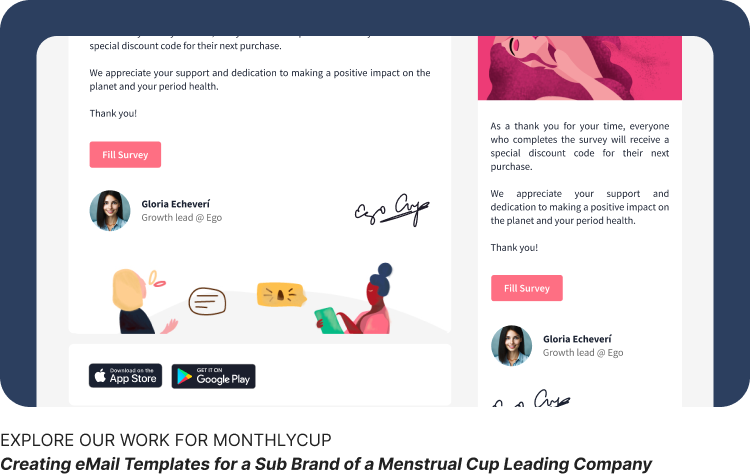
Email campaigns are a series of strategically planned and executed emails sent to a targeted list of subscribers. They serve various purposes, such as promoting products or services, nurturing leads, building customer relationships, and driving conversions.
Within the context of Quo Agency's services, email campaigns involve:
-
Conceptualization and Strategy: Defining the campaign's goals, target audience, messaging, and key performance indicators (KPIs).
-
Content Creation: Crafting compelling email copy, subject lines, and calls to action that resonate with the target audience and encourage them to take the desired action.
-
Design and Layout: Creating visually appealing and user-friendly email templates that reflect the brand's identity and enhance the overall user experience.
-
Segmentation and Personalization: Dividing the subscriber list into segments based on demographics, interests, or behavior, and tailoring email content to each segment for increased relevance and engagement.
-
Automation and Workflow: Setting up automated email sequences triggered by specific actions or events, such as welcome emails, abandoned cart reminders, or post-purchase follow-ups.
-
Testing and Optimization: Conducting A/B testing on different email elements, such as subject lines, calls to action, and design layouts, to identify the most effective strategies and improve campaign performance.
-
Analytics and Reporting: Tracking and analyzing key metrics, such as open rates, click-through rates, and conversions, to measure campaign success and identify areas for improvement.
By offering email campaign services, Quo Agency can help busy marketing teams create and execute effective email marketing strategies that drive results and achieve their business goals.
Then, email templates are essentially the HTML structure that defines the layout, design, and content placement of an email. These templates are then uploaded to email marketing platforms like Mailchimp or HubSpot, where they can be populated with dynamic content and sent to subscribers.
The usefulness of creating custom email templates lies in several key areas:
-
Brand Consistency: Templates ensure that all your emails maintain a consistent look and feel, reinforcing your brand identity and creating a cohesive experience for subscribers.
-
Efficiency & Scalability: Templates streamline the email creation process, allowing you to quickly create and send professional-looking emails without starting from scratch each time. This is especially valuable for busy marketing teams managing multiple campaigns.
-
Improved User Experience: Well-designed templates enhance the readability and visual appeal of your emails,leading to better engagement and higher click-through rates.
-
Mobile Optimization: Templates can be designed to be responsive across various devices, ensuring your emails look great on desktops, tablets, and smartphones.
-
Personalization: Templates can incorporate dynamic content blocks that allow for personalized messaging based on subscriber data, increasing relevance and engagement.
-
Testing & Optimization: By creating different template variations, you can conduct A/B testing to identify the most effective designs and layouts for your audience.
In essence, custom email templates provide a powerful tool for busy marketing teams to create professional, engaging,and effective email campaigns that drive results.
Social media is a multifaceted tool that can be leveraged to achieve a wide range of marketing and business objectives. It's an essential component of any modern brand's digital strategy, enabling them to connect with their audience, build relationships, and drive growth.
For instance, social media content can play a significant role in supporting SEO efforts.
Here's how:
- Content Amplification: Engaging social media content can attract attention and encourage shares, increasing the reach of your website or blog posts. This wider exposure can lead to more opportunities for other websites to discover and link to your content, thus contributing to link building.
- Brand Building & Authority: A strong social media presence helps establish your brand as a thought leader and authority in your industry. This can make other websites more likely to link to your content, as they see you as a credible source of information.
- Relationship Building: Social media provides a platform for connecting with influencers, industry leaders, and potential partners. These relationships can lead to guest posting opportunities, collaborations, and other link-building opportunities.
- Social Signals: While not a direct ranking factor, social signals (likes, shares, comments) can indirectly influence search engine rankings by indicating the popularity and relevance of your content.
In essence, social media content acts as a catalyst for link building and off-page SEO efforts. By creating engaging and shareable content, you can increase your brand's visibility, attract backlinks, and improve your overall search engine rankings.
Social media's role extends far beyond just SEO. It's a dynamic tool that empowers brands to:
-
Build Brand Awareness & Community: Create a strong online presence, engage with your audience, and foster a loyal community around your brand.
-
Drive Website Traffic & Conversions: Share links to your website, blog posts, and landing pages to attract visitors and generate leads or sales.
-
Showcase Products & Services: Highlight your offerings through visually appealing posts, videos, and customer testimonials.
-
Provide Customer Service & Support: Respond to inquiries, address concerns, and build relationships with customers in real-time.
-
Conduct Market Research & Gather Feedback: Gain valuable insights into your target audience's preferences,interests, and pain points.
-
Run Targeted Advertising Campaigns: Reach specific demographics and interests with precision targeting and ad formats.
-
Stay Ahead of the Competition: Monitor industry trends, competitor activity, and customer sentiment to stay informed and adapt your strategies.
In essence, social media is a multifaceted tool that can be leveraged to achieve a wide range of marketing and business objectives. It's an essential component of any modern brand's digital strategy, enabling them to connect with their audience, build relationships, and drive growth.
Digital ad campaigns are a crucial component of a comprehensive digital marketing strategy. They involve creating and managing paid advertisements across various online platforms, such as search engines, social media, display networks,and video platforms.
The connection between digital ad campaigns and the other services offered by Quo Agency lies in their synergistic relationship in achieving marketing objectives.
-
Websites and Landing Pages: Effective ad campaigns often direct users to specific landing pages or sections of a website. Quo Agency's expertise in web design and development ensures that these landing pages are optimized for conversions, providing a seamless user experience and maximizing the return on ad spend.
-
Content Creation & Augmentation: Compelling ad copy and visuals are essential for capturing attention and driving clicks. Quo Agency's content creation and augmentation services can be leveraged to develop persuasive ad copy, eye-catching graphics, and engaging video content that resonates with the target audience.
-
Social Media Content: Social media platforms are major channels for digital advertising. Quo Agency's social media expertise can be utilized to create and manage social media ad campaigns, ensuring they align with the overall brand strategy and achieve optimal reach and engagement.
-
Video Production: Video ads are increasingly popular and effective in capturing attention and conveying brand messages. Quo Agency's video production capabilities can be utilized to create high-quality video ads that drive results.
-
Graphic Design & Illustration: Eye-catching visuals are crucial for successful digital ad campaigns. Quo Agency's graphic design and illustration services can be leveraged to create compelling ad graphics, banners, and other visual assets that stand out and drive clicks.
In essence, digital ad campaigns are an integral part of the marketing mix, and Quo Agency's diverse talent pool and service offerings can support various aspects of campaign creation, execution, and optimization. By integrating digital ad campaigns with other services like web development, content creation, and graphic design, Quo Agency can provide clients with a holistic approach to digital marketing that drives results and maximizes ROI.
Content Creation & Augmentation
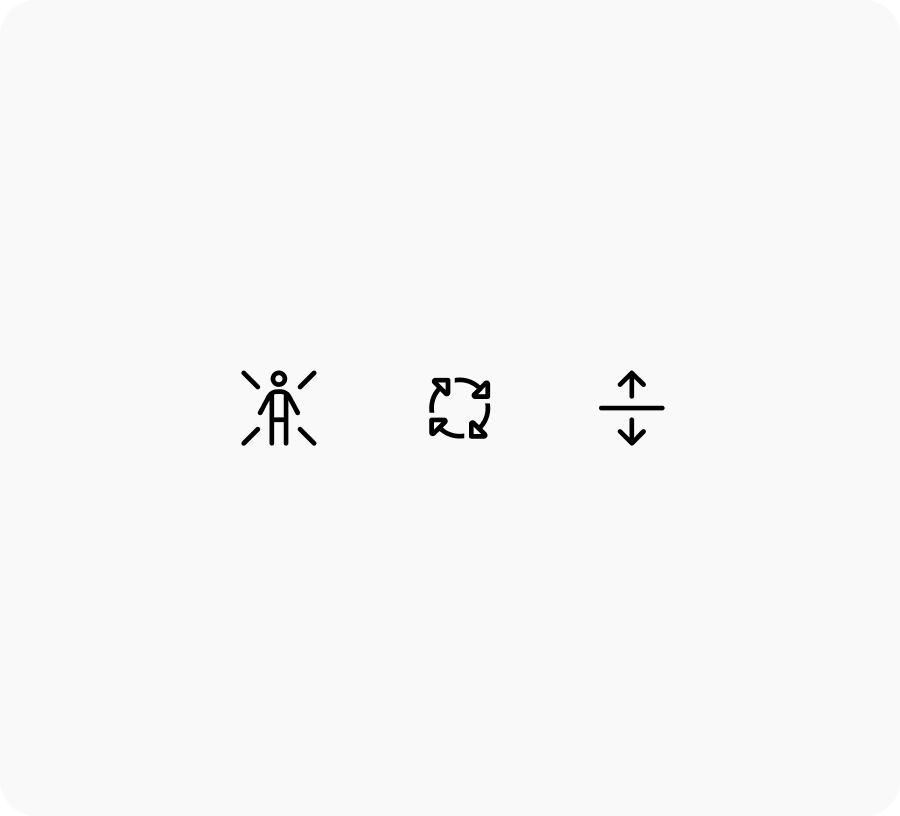
Let's outline the process of transcription and data extraction, incorporating the use of AI tools to streamline the workflow:
1. Source Material Preparation:
-
Obtain the audio/video files: Secure the raw podcast or long-format conversation recordings in a suitable format (e.g., MP3, WAV, MP4).
-
Pre-processing (if necessary): Enhance audio quality if needed, reducing background noise or adjusting volume levels for optimal transcription accuracy.
2. Transcription:
-
AI-Powered Transcription: Utilize AI transcription services like Otter.ai, Trint, or Descript to automatically convert audio/video into text. These tools leverage machine learning algorithms to transcribe speech with impressive accuracy and speed.
-
Manual Review & Correction: While AI transcription is efficient, it's essential to have a human review the transcripts to correct any errors, ensure proper formatting, and add punctuation for clarity.
3. Data Extraction & Analysis:
-
AI-Assisted Keyword & Theme Identification: Employ AI tools to identify key themes, topics, and recurring keywords within the transcripts. This helps to quickly grasp the core concepts and identify potential content angles.
-
Manual Review & Annotation: Human reviewers carefully analyze the transcripts, highlighting key quotes,statistics, actionable insights, and other valuable data points. This ensures accuracy and context preservation.
-
Data Organization & Categorization: Structure the extracted data into a usable format, categorizing it by topic,speaker, or other relevant criteria. This facilitates easy access and repurposing of the information.
4. Content Augmentation & Repurposing:
-
Content Planning: Develop a content strategy based on the extracted data, identifying opportunities for blog posts,e-books, social media snippets, infographics, and other formats.
-
Content Creation: Leverage the extracted quotes, insights, and data points to create compelling and informative content that aligns with the target audience and marketing goals.
-
SEO Optimization: Ensure the repurposed content is optimized for search engines by incorporating relevant keywords and metadata.
-
Content Distribution & Promotion: Share the repurposed content across various channels, including social media,email marketing, and your website, to maximize reach and engagement.
Benefits of AI Integration:
-
Increased Efficiency: AI transcription and data extraction tools significantly speed up the process, saving time and resources.
-
Improved Accuracy: AI transcription services continue to improve in accuracy, reducing the need for extensive manual corrections.
-
Enhanced Insights: AI-powered analysis can uncover hidden patterns and trends in the data, providing valuable insights for content creation and marketing strategies.
By combining the power of AI with human expertise, Quo Agency can efficiently transform long-format conversations into a wealth of valuable content assets, empowering clients to amplify their message and achieve their marketing goals.
Lead magnets are valuable pieces of content offered to potential customers in exchange for their contact information, typically an email address. They serve as a powerful tool for attracting and capturing leads, building email lists, and nurturing prospects through the sales funnel.
Types and Examples of Lead Magnets:
-
E-books & Guides: In-depth resources that provide valuable information and insights on a specific topic relevant to your target audience.
-
Checklists & Templates: Actionable tools that help users simplify tasks or achieve specific goals.
-
Webinars & Workshops: Live or recorded online events that offer educational content and opportunities for interaction.
-
Case Studies & White Papers: In-depth analyses of successful projects or industry trends that demonstrate your expertise and thought leadership.
-
Free Trials & Demos: Offer a limited-time trial or demonstration of your product or service to showcase its value and encourage conversions.
-
Discount Codes & Exclusive Offers: Provide special incentives to entice potential customers to take action.
Process of Creating Lead Magnets:
-
Identify Target Audience & Pain Points: Understand your ideal customer and their challenges to create a lead magnet that addresses their specific needs.
-
Choose the Right Format: Select a format that aligns with your audience's preferences and the type of information you want to share.
-
Create High-Quality Content: Develop valuable, informative, and engaging content that provides a solution or addresses a pain point for your target audience.
-
Design & Packaging: Create an attractive and professional design for your lead magnet, ensuring it's visually appealing and easy to consume.
-
Landing Page & Promotion: Create a dedicated landing page to showcase your lead magnet and promote it through various channels, such as social media, email marketing, and paid advertising.
-
Lead Capture & Nurturing: Implement a lead capture form on your landing page to collect contact information and follow up with leads through targeted email campaigns to nurture them towards conversion.
By creating compelling and relevant lead magnets, Quo Agency can help clients attract high-quality leads, build their email lists, and establish themselves as trusted authorities in their industry.
Blog Posts are short, frequent pieces of content that cover a wider range of topics. They can be used to share company news, industry insights, thought leadership, or product updates. Blog posts are ideal for driving organic traffic, engaging with your audience, and establishing your brand as a thought leader.
Blog posts have the potential to benefit a wide range of industries, each in different ways. However, certain sectors are particularly well-suited to leverage blog content to enhance their marketing and communication efforts. Let's highlight a few examples:
-
Technology & SaaS: Blog posts can be used to educate audiences about complex technologies, demonstrate thought leadership, and attract potential customers through informative content.
-
Healthcare & Pharmaceuticals: Blogs offer a platform to share health-related information, answer patient questions, and build trust with potential clients.
-
Financial Services: Blogs can be used to explain financial concepts, provide market analysis, and position businesses as trusted advisors in the financial industry.
-
E-commerce & Retail: Blogs can drive traffic to online stores, showcase products, and provide valuable information that helps customers make informed purchasing decisions.
-
Education: Blogs can share educational resources, provide updates on industry trends, and attract students and educators.
-
Professional Services: Blogs can showcase expertise, demonstrate thought leadership, and attract potential clients in industries like law, consulting, and marketing.
-
Travel & Hospitality: Blogs can inspire travelers, showcase destinations, and provide valuable tips for planning trips.
These are just a few examples, and virtually any industry can benefit from well-crafted blog posts.
The key lies in creating relevant and engaging content that resonates with your target audience and addresses their pain points. By providing valuable information and insights, you can build trust, establish authority, and drive meaningful engagement with your brand.
Leveraging long-format conversations as the source material for social media posts is a smart strategy for several reasons:
- Relevance and Value: Long-format conversations, such as podcasts or interviews, often delve deep into specific topics, providing valuable insights and perspectives. By extracting key points, quotes, or anecdotes from these conversations, you can create social media posts that are both relevant and informative to your target audience.
- Authenticity and Engagement: Content derived from real conversations tends to be more authentic and engaging than generic marketing messages. It allows you to showcase the personalities and expertise of your clients or thought leaders, fostering a deeper connection with your audience.
- SEO Benefits: Repurposing long-format content into social media posts can also contribute to your SEO efforts.By including relevant keywords and linking back to the original content, you can increase visibility and drive traffic to your website or podcast.
Infographics & Visuals & Workshop Content involves creating original visual content that conveys information or tells a story in a concise and engaging way. This includes:
-
Infographics: Visual representations of data, statistics, or processes, using charts, graphs, and illustrations to simplify complex information.
-
Visuals: Images, photos, and other visual elements used to enhance written content or create standalone visual stories.
-
Workshop Content: Presentations, slide decks, and other materials used to deliver educational or training sessions.
While both categories involve creating engaging content, the key difference lies in the source material. Micro-podcasts,audiograms, and short video capsules repurpose existing long-form content, while infographics, visuals, and workshop content are created from scratch to present new information or ideas in a visually appealing way.
III. Amplify Your Brand with Visual Storytelling
Video Production
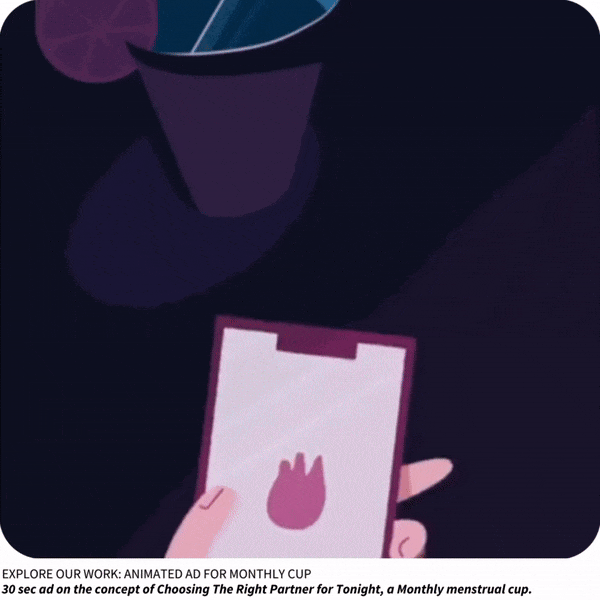
Concept & Script Development: This initial stage involves brainstorming ideas, defining the key message, and crafting a compelling script that clearly explains the product, service, or process.
Pre-Production: This phase includes storyboarding, shot list creation, scouting, scenario, products preparation, and film equipment preparation.
Production: This is where the actual filming or recording takes place, capturing live-action footage on the products according to the concept initially defined.
Creative Content Development: This includes crafting the video explainer itself, using the footage to tell a compelling story about the camera and its unique features. This involves scriptwriting, editing, motion graphics, and other creative elements to produce an engaging and informative video that resonates with the target audience: adding motion graphics, sound effects, and music, and color grading the final product.
Essentially, this would involve creating videos that emulate the style and format of popular YouTube content, focusing on topics relevant to your clients' target audience. These videos could include:
-
Educational tutorials and how-to guides: Demonstrating how to use a product or service, providing tips and tricks, or explaining complex concepts in an easy-to-understand manner.
-
Thought leadership and industry insights: Sharing expert opinions, analyzing trends, and offering valuable perspectives on relevant topics.
-
Behind-the-scenes glimpses and company culture videos: Giving viewers a peek into your clients' company culture, showcasing their team, and highlighting their values.
-
Product reviews and demonstrations: Showcasing products in action, highlighting their features and benefits, and providing honest reviews.
-
Interviews and Q&A sessions: Featuring industry experts, thought leaders, or satisfied customers to provide valuable insights and build credibility.
By offering "A la Youtube" video production services, Quo Agency can tap into the vast potential of video marketing and help reach a wider audience, increase engagement, and drive conversions.
-
Concept & Storyboarding: Similar to corporate explainers, this phase involves developing the core concept and creating a visual storyboard that outlines the animation's narrative and key scenes.
-
Illustration & Design: This stage focuses on creating the visual assets for the animation, including character designs, backgrounds, and other elements.
-
Animation: This is where the illustrations and designs are brought to life through 2D or 3D animation techniques.
-
Sound & Music: Adding sound effects, voiceovers, and music to enhance the animation's impact and emotional resonance.
- Pre-Production:
- Concept Development: We collaborate with the client to define the podcast's purpose, target audience, format, and overall tone.
- Guest Outreach and Scheduling: We identify and secure relevant guests, coordinate schedules, and ensure they're prepared for the recording.
- Script and Outline Creation: We develop a detailed outline or script to guide the conversation and ensure key points are covered.
- Technical Setup: We ensure all participants have the necessary equipment and software, and conduct test recordings to ensure optimal audio quality.
- Production:
- Recording: We utilize Riverside.fm to capture high-quality audio remotely, ensuring everyone sounds their best, regardless of location.
- Editing and Post-Production: We meticulously edit the audio, removing any errors or distractions, and enhance the overall sound quality. We may also add music, sound effects, and other elements to create a polished final product.
- Distribution and Promotion:
- Publishing: We assist in publishing the podcast to major platforms like Apple Podcasts, Spotify, and Google Podcasts.
- Show Notes and Transcriptions: We create detailed show notes and transcripts to enhance accessibility and searchability.
- Promotion: We collaborate with the client to develop and execute a promotion strategy, leveraging social media, email marketing, and other channels.
- Ongoing Management:
- Scheduling and Production: We maintain a consistent production schedule, ensuring new episodes are released on time.
- Analytics and Reporting: We track key metrics like downloads, listens, and engagement to measure the podcast's success and identify areas for improvement.
Throughout this process, Quo Agency acts as a trusted partner, guiding clients through each step and ensuring the final product meets their expectations.
Remember, this process is flexible and can be customized to meet the specific needs and goals of each client. We can tailor our services to fit any budget or timeline, and we're always available to provide ongoing support and guidance.
Repurposing long-format podcast videos is a smart and efficient strategy to maximize content reach and engagement.
-
Social Media Shorts: Extract captivating sound bites, intriguing quotes, or visually interesting moments to create eye-catching short-form videos. These can be used to promote the full episode, highlight key takeaways, or simply entertain and engage followers.
-
YouTube "Micro-Podcasts": Condense the core message of a longer podcast episode into a concise 5-minute video. This allows you to cater to audiences with shorter attention spans and potentially attract new listeners who may not have the time to invest in a full episode.
-
Explainer Videos: If the podcast episode delves into a specific topic or concept, create an explainer video that visually illustrates the key points. This can be particularly useful for complex or technical subjects, making them more accessible and engaging.
-
Testimonial Videos: If the podcast features interviews or discussions with satisfied customers, extract their positive comments and create compelling testimonial videos.
By strategically repurposing long-form podcast videos into these different formats, Quo Agency can extend the lifespan of its content, reach wider audiences, and reinforce key messages across multiple platforms. It's a cost-effective way to maximize the value of existing assets and generate greater returns on investment.
Branding & Design
In essence, "Branding & Design" encapsulates our expertise in crafting visual assets that not only look aesthetically pleasing but also strategically align with the brand's overarching goals and messaging.
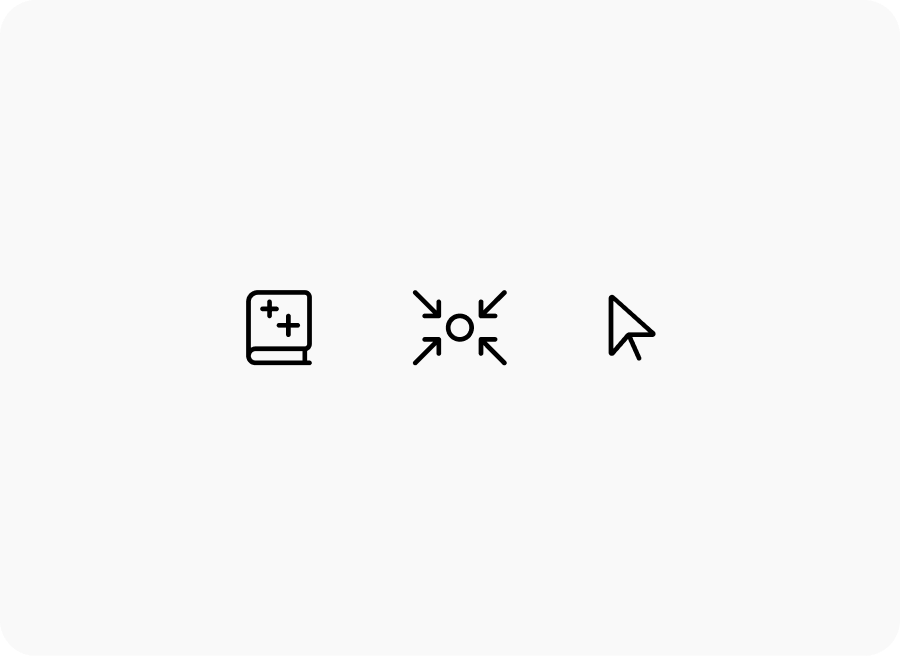
Let's dive into a typical Logo Design and Branding process. It's a crucial area for any business:
1. Discovery and Research:
- Client Briefing: This is where we kick things off by having an in-depth discussion with the client to understand their business, target audience, brand values, and overall vision.
- Market and Competitor Analysis: We conduct thorough research into the client's industry, competitors, and target market to identify trends, opportunities, and potential pitfalls.
2. Concept Development:
- Brainstorming and Ideation: Based on the insights gathered in the discovery phase, we brainstorm various logo concepts and design directions that align with the client's brand identity.
- Sketching and Conceptualization: We create rough sketches and visual representations of the potential logo designs, exploring different styles, typography, and color palettes.
3. Design Refinement:
- Digital Rendering: We select the most promising concepts and develop them further using professional design software, refining the details and ensuring scalability across various applications.
- Presentation and Feedback: We present the refined logo designs to the client, gather their feedback, and iterate on the designs based on their input.
4. Finalization and Delivery:
- Final Revisions and Approval: We make any necessary adjustments to the chosen logo design and obtain final approval from the client.
- File Preparation and Delivery: We prepare the final logo files in various formats and resolutions, ensuring they are suitable for both print and digital use. We also provide a style guide outlining the proper usage of the logo and brand elements.
5. Brand Identity Development (Optional):
- Brand Guidelines: We create comprehensive brand guidelines that define the visual and verbal elements of the brand, including color palettes, typography, imagery, and messaging.
- Brand Collateral Design: We design various brand collateral such as business cards, letterheads, and social media graphics, ensuring consistency and cohesiveness across all touchpoints.
Key Considerations:
- Collaboration: We maintain open communication and collaboration throughout the process, ensuring the client is actively involved and their vision is reflected in the final product.
- Creativity and Innovation: We strive to create unique and memorable logo designs that stand out from the competition and resonate with the target audience.
- Scalability and Versatility: We ensure the logo design is adaptable and can be used effectively across various platforms and applications.
- Timeliness and Efficiency: We manage the project efficiently, adhering to deadlines and delivering high-quality work within the agreed-upon timeframe.
By refining our Logo Design and Branding offering based on these key principles, Quo Agency can deliver exceptional results that help clients establish a strong brand presence and achieve their business goals.
Now, even established businesses with existing logos often find themselves in need of a rebranding or logo redesign. Here are a few scenarios where our services would be highly valuable:
- Brand Evolution: Perhaps the company has undergone significant changes in its mission, values, or target audience. A logo redesign can help reflect these changes and ensure the brand remains relevant and appealing.
- Outdated Design: Over time, design trends change. A logo that once felt modern and cutting-edge may now appear dated and out of touch. A fresh design can revitalize the brand and give it a contemporary feel.
- Mergers and Acquisitions: When two companies merge, or one acquires another, a new logo and brand identity are often necessary to unify the two entities and represent the new organization.
- Expansion into New Markets: If a company is expanding into new markets or launching new product lines, a logo redesign or brand refresh can help ensure the brand resonates with a wider or different audience.
- Negative Brand Perception: In some cases, a company may need to rebrand due to negative publicity or a tarnished reputation. A new logo and brand identity can signal a fresh start and help rebuild trust with customers.
Remember, a logo is often the first point of contact between a brand and its audience. It's essential that it accurately reflects the company's values, resonates with its target market, and remains relevant in an ever-changing landscape. Even established businesses can benefit from a periodic brand assessment and potential logo redesign to ensure their visual identity remains strong and impactful.
Essentially, branding provides the strategy and guidelines, while marketing collaterals bring that strategy to life. They work in tandem to create a cohesive and consistent brand experience that resonates with your target audience.
Key Points to Remember:
- Consistency is Key: Effective marketing collaterals consistently reflect the established branding guidelines, ensuring a unified and recognizable brand presence across all touchpoints.
- Branding Informs Design: The visual elements of marketing collaterals - color palettes, typography, imagery - should align with the brand's visual identity, creating a sense of familiarity and trust.
- Messaging Reinforces Branding: The language and tone used in marketing collaterals should echo the brand's voice and personality, further solidifying its identity in the minds of consumers.
- Collaterals Bring the Brand to Life: Marketing collaterals are the tools that allow your audience to interact with and experience your brand, turning abstract concepts into tangible representations.
By ensuring a strong connection between branding and marketing collaterals, businesses can create a powerful and memorable brand presence that fosters recognition, trust, and loyalty among their target audience. It's a synergistic relationship where each element supports and reinforces the other, ultimately driving business growth and success.
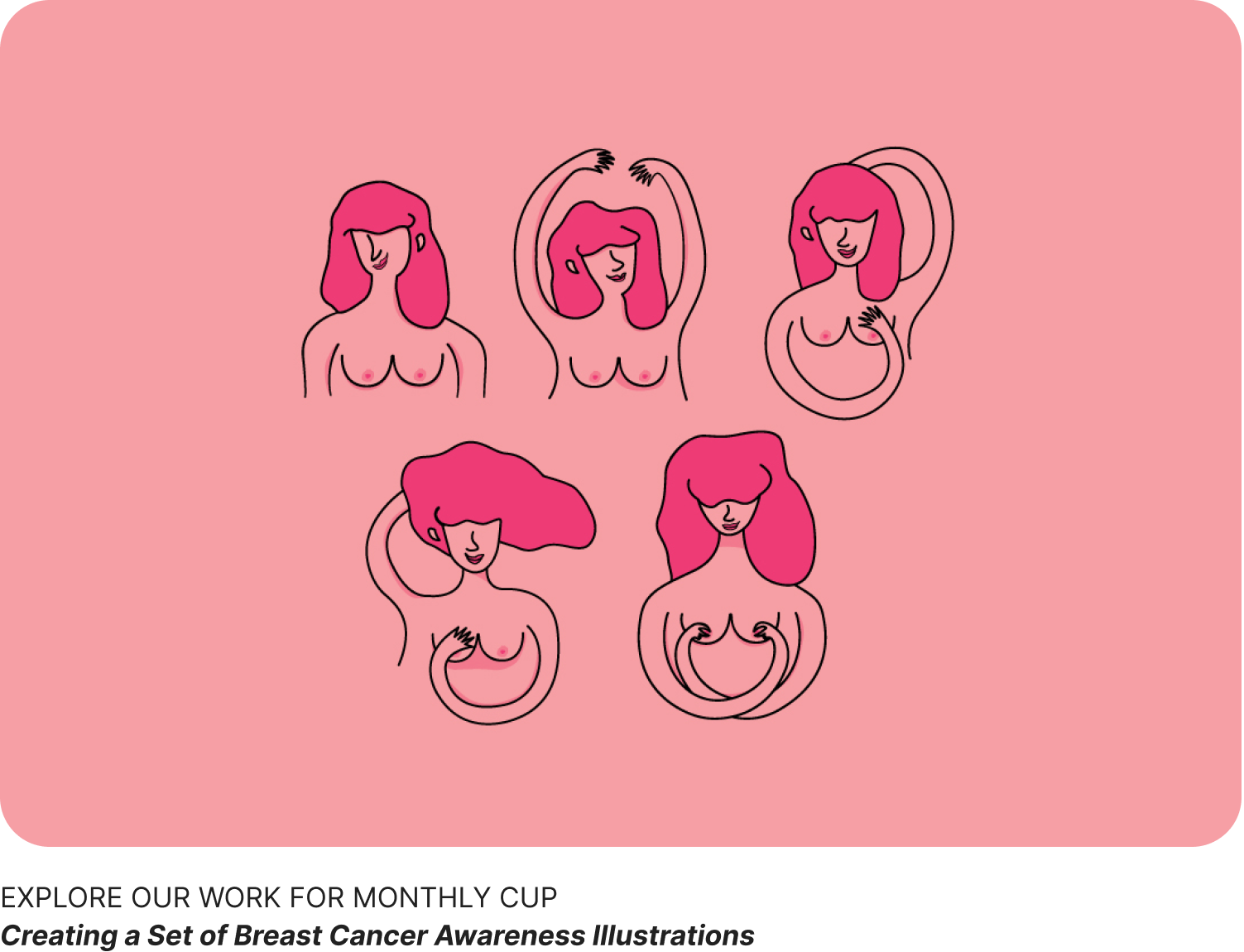
Here's how illustrations fit into the broader branding and marketing picture:
- Visual Communication: Illustrations offer a versatile and engaging way to convey complex ideas, product features, or brand stories in a visually appealing and easily digestible manner.
- Brand Differentiation: Unique and customized illustrations create a distinct visual language that differentiates a brand from its competitors and fosters brand recognition.
- Emotional Connection: Illustrations can evoke specific emotions and create a sense of personality for the brand, allowing it to connect with its audience on a deeper, more personal level.
- Versatility and Adaptability: Illustrations can be used across various marketing touchpoints, from website banners and social media graphics to print materials and product packaging, ensuring consistent brand communication.
In essence, illustrations inject life and personality into the brand, transforming static messaging into dynamic visual narratives that capture attention and leave a lasting impression. They enhance the effectiveness of marketing collateral, fostering greater engagement and driving positive brand perception.
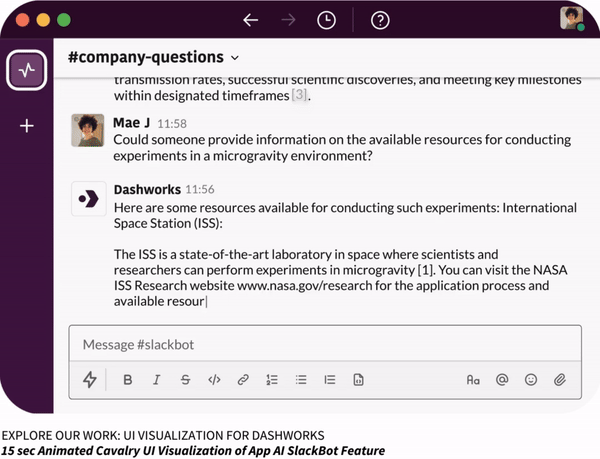
UI Visualization, or Interface Design Visualization, bridges the gap between software functionality and user understanding. It transforms the often-complex workings of a user interface into digestible visuals, whether through static images, animated sequences, or interactive prototypes.
This service proves indispensable in scenarios where clear communication of software features is paramount. It allows businesses to:
- Showcase product features and functionality: Illustrate how users interact with the software, highlighting key features and their benefits.
- Simplify complex processes: Break down intricate workflows or technical concepts into easily understandable visual representations.
- Enhance marketing materials: Augment product descriptions, landing pages, or presentations with engaging visuals that showcase the software's capabilities.
- Improve user onboarding and training: Provide visual guides and tutorials that help users quickly grasp the interface and its functions.
- Support sales and customer success teams: Equip teams with visual aids to clearly explain the software's value proposition and address customer inquiries.
UI visualization is particularly beneficial for:
- Software companies and tech startups: Promoting and explaining new products or features.
- SaaS businesses: Demonstrating the value and functionality of their platforms.
- E-commerce platforms: Showcasing product customization or checkout processes.
- Educational technology: Illustrating how software supports learning and development.
Essentially, any business relying on a user interface to deliver its product or service can benefit from UI visualization. It empowers them to communicate effectively with their audience, improve user experience, and drive adoption and engagement.
Icons are a vital part of establishing and maintaining a consistent brand identity, just like PayPal's distinctive icon set, for instance.
These icons are designed with a cohesive style, ensuring visual consistency across all brand communications, whether it's on the website, social media, marketing materials, or even within the product interface itself.
Having a dedicated icon library brings numerous benefits:
- Reinforced Brand Identity: Consistent use of custom icons reinforces the brand's visual identity, creating a sense of familiarity and recognition among the audience.
- Enhanced Communication: Icons serve as visual shortcuts, conveying information quickly and efficiently, especially in digital spaces where attention spans are limited.
- Improved User Experience: Clear and intuitive icons enhance the user experience by providing visual cues for navigation, actions, or features, making the interaction with the brand more seamless and enjoyable.
- Professionalism and Polish: A well-crafted icon library adds a touch of professionalism and polish to the brand's overall presentation, demonstrating attention to detail and commitment to quality.
In essence, icons, just like logos and other branding elements, play a crucial role in shaping brand perception and fostering a strong connection with the audience.
Conceptual artwork has broad applications across various industries and scenarios where visual communication needs to transcend the literal and evoke a specific idea, emotion, or message. Here are some prominent examples:
- Technology and Software: Illustrate abstract concepts like data security, cloud computing, or artificial intelligence, making them more accessible and engaging for a broader audience.
- Healthcare and Pharmaceuticals: Visualize medical procedures, health conditions, or the benefits of specific treatments in a sensitive and informative manner.
- Finance and Banking: Communicate complex financial concepts like investments, savings, or insurance in a clear and visually appealing way.
- Education and E-learning: Enhance learning materials with illustrations that simplify complex topics, aid understanding, and boost retention.
- Non-profit and Social Causes: Raise awareness for social issues or environmental concerns through evocative and impactful illustrations that inspire action.
- Advertising and Marketing: Create eye-catching visuals for ad campaigns, websites, and social media that tell a story, evoke emotions, and generate brand engagement.
Specific scenarios where conceptual artwork are invaluable include:
- Explaining intangible concepts or services.
- Conveying complex information in a simplified manner.
- Creating visual metaphors or allegories.
- Eliciting specific emotions or responses.
- Adding personality and visual appeal to otherwise dry or technical content.
In essence, conceptual artwork proves beneficial whenever a visual element needs to go beyond mere representation and tap into the realm of ideas, emotions, and abstract thinking. It's a powerful tool to enhance communication, engagement, and brand perception, making it relevant across a broad spectrum of industries and applications.
Print Design
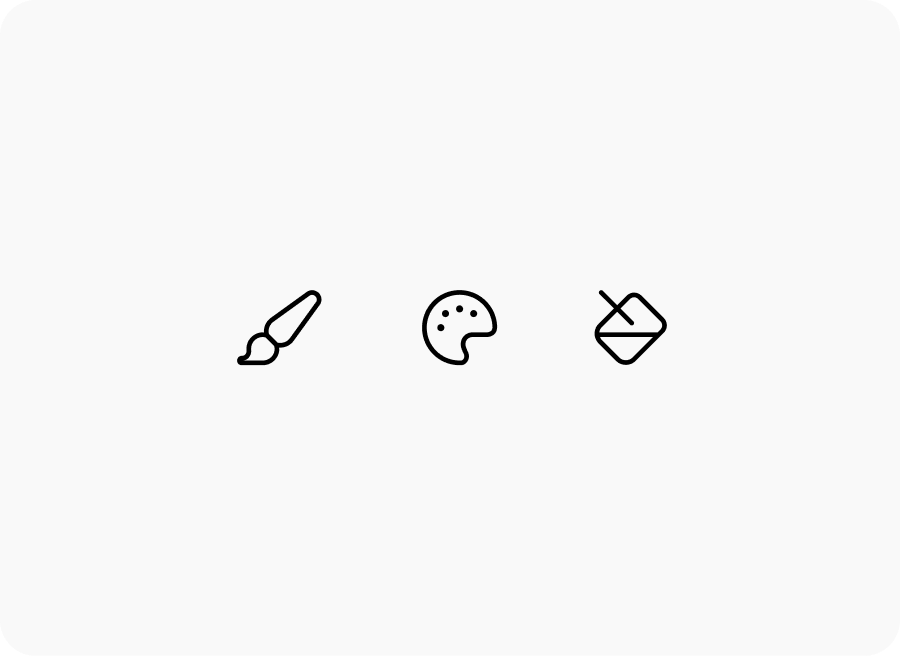
Process:
-
Understanding the Brand and Goals: We begin by thoroughly understanding your brand, target audience, and specific objectives for the trade show. What message do you want to convey? What actions do you want visitors to take?
-
Conceptualization and Design: We brainstorm creative concepts that align with your brand identity and objectives. This involves considering factors such as booth size, layout, traffic flow, and visual elements. We'll then create 3D renderings or sketches to visualize the concept.
-
Preparing artworks for the manufacturer.
-
Graphics and Branding: We design eye-catching graphics and signage that reinforce your brand message and capture attention from afar.
Industries:
Trade show booth design is relevant to virtually any industry participating in exhibitions or conferences. Some key sectors include:
- Technology: Showcase cutting-edge products, software, or services with interactive displays and demonstrations.
- Healthcare: Create informative and engaging booths that highlight medical devices, pharmaceuticals, or healthcare solutions.
- Manufacturing: Exhibit machinery, equipment, or industrial solutions with a focus on functionality and efficiency.
- Consumer Goods: Attract potential customers with visually appealing displays and product demonstrations.
- Food and Beverage: Offer samples, showcase packaging, and create a welcoming environment for brand interaction.
- Professional Services: Convey expertise and establish credibility with well-designed booths and interactive presentations.
Flyers are typically single-page printed or digital documents used to promote a specific product, service, event, or offer. They are often distributed in high-traffic areas, mailed directly to potential customers, or shared online through social media and email campaigns. Flyers are designed to capture attention quickly with eye-catching visuals, concise messaging, and clear calls to action.
Brochures are multi-page printed or digital documents designed to provide in-depth information about a company, product, service, or event. Unlike flyers, which are typically single-page and focus on a specific message or offer, brochures offer a more comprehensive overview and can include detailed descriptions, features, benefits, testimonials, and contact information.
In the context of "Branding & Design," brochures play a crucial role in showcasing a company's brand identity and communicating its value proposition in a polished and professional manner. They are often used as sales tools, informational guides, or leave-behinds at events or meetings.
At Quo Agency, we approach brochure design with the same meticulous attention to detail as we do with other visual communications. We ensure that the design, layout, and messaging are not only visually appealing but also effectively convey the brand's story and key messages. We leverage our expertise in graphic design, typography, and information architecture to create brochures that are both informative and engaging, leaving a lasting impression on the reader.
Posters are typically small in size and intended for close-up viewing. They often convey detailed information or promote specific events or products. You'll often see posters displayed on walls, bulletin boards, or windows. Think of a movie poster at a cinema or a concert poster in a music venue. Their primary purpose is to inform and persuade the viewer at a close range.
Banners, on the other hand, are much larger and designed to be seen from a distance. They are typically used for outdoor advertising or in large indoor spaces like trade shows or conferences. Banners often feature bold graphics and concise messages to grab attention from afar. Their main goal is to create brand awareness and generate interest.
Key differences:
- Size: Banners are significantly larger than posters.
- Viewing Distance: Banners are meant to be seen from a distance, while posters are designed for close-up viewing.
- Placement: Banners are often used outdoors or in large indoor spaces, while posters are typically placed on walls or other vertical surfaces.
- Message: Banners generally have a broader, more impactful message, while posters provide more detailed information.
- Purpose: Banners are primarily used for brand awareness and promotion, while posters are used for information and persuasion.
Stationery is a powerful tool for making a tangible, lasting impression. Let's break down some common forms of stationery and explore their relevance across various industries.
Common Forms of Stationery
- Letterheads: The cornerstone of professional correspondence, featuring the company logo, contact information, and often a subtle design element that reinforces brand identity.
- Business Cards: A portable representation of your brand and contact information, essential for networking and leaving a memorable first impression.
- Envelopes: Carrying your brand's message beyond the contents, envelopes offer a chance to showcase creativity and reinforce professionalism.
- Notecards & Thank-You Cards: A touch of personal connection for expressing gratitude or sending brief messages, reflecting brand values and fostering positive relationships.
- Presentation Folders: A polished way to organize and present proposals, reports, or other important documents, enhancing the perceived value and professionalism of your materials.
Here are some more radical creative and unique forms of stationery that can truly set a brand apart:
- Seed Paper Business Cards: Embedded with seeds, these cards can be planted after use, literally growing the relationship and showcasing a commitment to sustainability.
- Edible Stationery: Imagine cookies or chocolates embossed with a company logo or contact details. A memorable and delicious way to leave a lasting impression.
- Fabric Letterheads or Envelopes: Using high-quality fabric for letterheads or envelopes adds a touch of luxury and tactile appeal, making them truly stand out in a pile of paper.
- Augmented Reality Stationery: Incorporate AR elements into business cards or brochures, allowing recipients to scan them with their smartphones and unlock interactive content or experiences.
- Handwritten Notes on Unique Materials: Send personalized notes on unconventional materials like wood slices,leather scraps, or even recycled circuit boards, demonstrating creativity and thoughtfulness.
- Custom Postage Stamps: Design personalized postage stamps featuring the company logo or a unique visual element, adding a touch of brand identity to every piece of mail.
- Interactive Business Cards: Incorporate QR codes, NFC chips, or other interactive elements into business cards,allowing recipients to instantly access digital portfolios, websites, or social media profiles.
- Upcycled or Sustainable Stationery: Create stationery from recycled materials or sustainable sources, showcasing a commitment to environmental responsibility.
These are just a few ideas to spark your creativity. The key is to think outside the box and find unique ways to express your brand's personality and values through stationery. By choosing unconventional materials, incorporating interactive elements, or focusing on sustainability, you can create stationery that truly stands out and leaves a lasting impression.
Industries that Benefit from Stationery
- Professional Services: Law firms, consulting firms, accounting firms, and other professional services businesses rely heavily on stationery to convey their credibility, expertise, and attention to detail.
- Creative Agencies: Design studios, advertising agencies, and marketing firms use stationery as a creative canvas to showcase their design prowess and express their brand personality.
- Luxury Brands: High-end retailers, hospitality businesses, and fashion brands leverage stationery to reinforce their exclusivity, sophistication, and commitment to quality.
- Startups and Small Businesses: Stationery can help emerging businesses establish a professional image and build brand recognition, even on a limited budget.
- Non-Profits and Educational Institutions: These organizations can use stationery to convey their mission and values, and to create a sense of trust and transparency.
In essence, any business that values professionalism, brand consistency, and building meaningful relationships can benefit from well-designed stationery. It's a subtle yet powerful tool that can elevate a brand's image and create a lasting impression on clients, partners, and stakeholders.
Packaging design is a multifaceted discipline that plays a vital role in attracting consumers, protecting products, and communicating brand values. Here are some common examples of packaging designs, categorized by their primary purpose:
Protection & Preservation
- Corrugated Cardboard Boxes: Ideal for shipping and storage due to their durability and versatility. They can be customized with branding elements and are easily recyclable.
- Rigid Plastic Containers: Provide excellent visibility of the product and protection from damage. They are often used for food, cosmetics, and electronics.
- Glass Bottles and Jars: Offer a premium and eco-friendly option for beverages, sauces, and cosmetics. They convey a sense of quality and are reusable.
- Metal Cans: Durable and ideal for long-term storage of food, beverages, and other goods. They are also recyclable.
- Flexible Pouches: Lightweight and space-saving, these are suitable for various products like snacks, coffee, and liquids. They can be customized with vibrant graphics and are often resealable.
Branding & Marketing
- Label Design: Labels are a crucial branding tool, providing product information, showcasing brand identity, and attracting attention on store shelves.
- Printed Boxes and Cartons: These offer a large canvas for creative branding, incorporating graphics, colors, and messaging that resonate with the target audience.
- Shrink Sleeves: Provide a full-body wrap for products, maximizing branding opportunities and offering tamper-evident features.
- Custom Packaging: Unique shapes, materials, or structural designs that create a memorable unboxing experience and set a product apart from competitors.
Functionality & User Experience
- Resealable Packaging: Allows for easy storage and extended product freshness.
- Easy-Open Packaging: Reduces frustration and enhances the user experience, particularly for seniors or those with limited dexterity.
- Portion-Controlled Packaging: Offers convenient and pre-measured portions, ideal for on-the-go consumption or dietary management.
- Sustainable Packaging: Utilizes eco-friendly materials and minimizes environmental impact, appealing to conscious consumers.
Specialized Packaging
- E-commerce Packaging: Optimized for shipping and protection during transit, while still incorporating branding elements for a positive unboxing experience.
- Gift Packaging: Luxurious and decorative packaging that elevates the perceived value of a gift and enhances the overall experience.
- Promotional Packaging: Limited-edition or special packaging that generates excitement and creates a sense of urgency for a particular campaign or event.
By understanding the diverse types of packaging designs available, businesses can strategically select solutions that effectively protect their products, reinforce their brand identity, and provide a positive user experience.
Packaging is more than just a protective covering; it's a strategic tool that combines form and function to enhance a brand's appeal, safeguard its products, and create a memorable consumer experience.
Services offered within packaging design typically include:
-
Structural Design: Creating the physical form and dimensions of the packaging, ensuring it's both functional and aesthetically pleasing. This includes selecting appropriate materials, considering transportation and storage requirements, and incorporating user-friendly features like easy-open mechanisms or resealable closures.
-
Graphic Design: Developing the visual elements of the packaging, including logos, labels, color schemes, and typography, to create a cohesive brand identity and attract consumer attention.
-
Production and Prototyping: Managing the production process, from material sourcing to manufacturing, ensuring the final packaging meets quality standards and design specifications. This may also involve creating prototypes to test and refine the design before mass production.
-
Sustainability Consulting: Advising on eco-friendly materials and design choices to minimize environmental impact and appeal to conscious consumers.
-
User Experience Design: Focusing on how consumers interact with the packaging, ensuring it's intuitive, convenient, and contributes to a positive unboxing experience.
-
Market Research and Analysis: Understanding consumer preferences, market trends, and competitor strategies to create packaging solutions that resonate with the target audience and stand out on store shelves.
By offering a comprehensive suite of packaging design services, we empower our clients to leverage their packaging as a powerful marketing tool, enhancing their brand image, protecting their products, and creating a memorable experience for their customers.





